Cyency DeepModel
Cyency DeepModel uses machine learning to create grades, domains and rock codes directly from drilling data.
Machine Learning
The term Machine Learning covers a broad range of algorithms - some quite simple, and some very complex. Researchers at Cyency are always on the lookout for new techniques that can be evaluated and directly applied to the mining industry via the Cyency DeepModel product. The techniques currently found to produce the best results are based on artificial neural networks (networks for short). These are not your grandparent’s networks. Results from a few years ago using small networks can easily be bettered. The new networks scale to millions of samples using tens of millions of parameters and use novel architectures to increase the spatial fidelity and predictive power.
Tuning
The range of possible designs for neural networks is vast. This is great because the range of deposits seen by the mining industry is also vast. Iron, copper, gold, zinc and other deposits all have different characteristics, and a one-size-fits-all strategy is not always optimal for a particular dataset. Cyency can optimise the system for a particular dataset using a well-defined set of parameters. These parameters can then be reused for future models and remain valid as the dataset is updated or grows.
Validation
The super-power for machine learning is cross validation. This allows you to quantitatively compare modelling techniques by first splitting the dataset into separate groups, or folds. Each fold is then iteratively put aside while the other folds are used to create a model. The model then predicts the set aside or held-out data and the results are compared. The modelling technique(s) that best predict the held-out data are then used. As well as selecting the best method, cross validation gives an estimate for the variability and quality of the predictions.
Ensemble
An extremely useful mathematical fact is that the results from two models can be averaged together to provide a result that is better than either of the two models individually. And by extension, an ensemble of many models can be used in a weighted average to produce an even better result.
Creating an ensemble of several variations of a model is easy with Cyency DeepModel. All it takes is a little extra computing power.
With other things being equal, a larger diversity of models in the ensemble is known to produce better results. So, while ensembling many Cyency DeepModels (with a variety of parameters), gives excellent results, combining with quite different models may be even better. The most accurate predictions might come from complementing a company’s existing block model with a Cyency DeepModel.
Workflow
While a model can be used to make predictions at arbitrary locations, the first step in using a model is generally to create a block model. This allows Cyency DeepModels to work seamlessly with existing tools.
Cyency DeepModels can be inserted into existing workflows in several ways:
-
As a service, Cyency can tune the algorithms for a particular dataset and deliver a block model along with a prediction accuracy report. This block model can then be used with existing tools.
-
Using a site licence, Cyency DeepModels can be created or updated on-premise and incorporated into an automated modelling workflow. For example, a new model could be created in response to grade control drilling to create near real-time updates to the estimated locations of high-grade ore.
-
Cloud integration. Cyency can work with your company to create a solution that can be run with your existing cloud infrastructure.
Case Study - Lisheen Lead-Zinc-Silver Mine

Situated in the Republic of Ireland, the Lisheen underground lead-zinc-silver mine was closed in 2015. The drilling data and resource block model were made public and are available for download.
The grade modelling creates some difficulties for machine-learning models, as well as traditional methods, because of the thinness of the ore.
The composite drilling data, which consists of approximately 6000 holes and 60000 assays, was modelled using the Cyency DeepModel software to generate a single model. This model was then rendered into a block model at 5x5x1 metre resolution. This resolution was chosen for convenience, although arbitrary resolutions are possible. The image below shows zinc grades and drilling data on a section, with grades above 25% shown in yellow. The drilling grades are honoured well and the interpolation between the drillholes looks plausible.
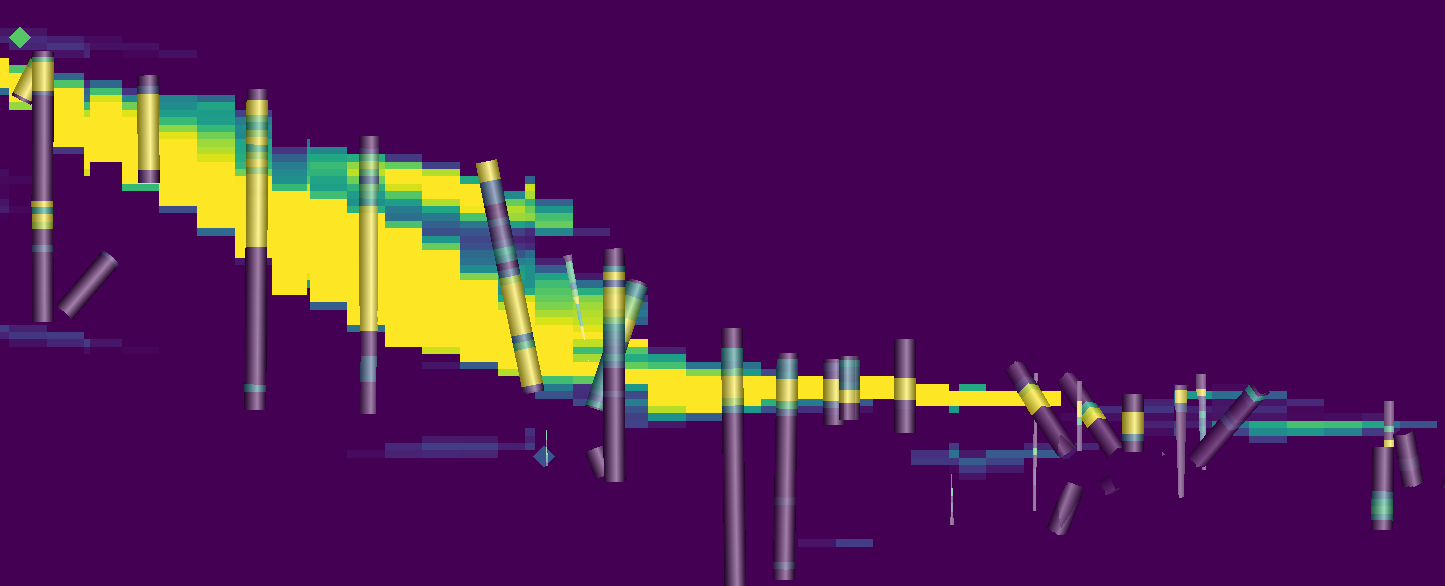
For comparison, the same section is shown below through the supplied production model. The two models appear to agree well, even though the Cyency DeepModel was generated in only a few minutes using nothing but the composites data file.
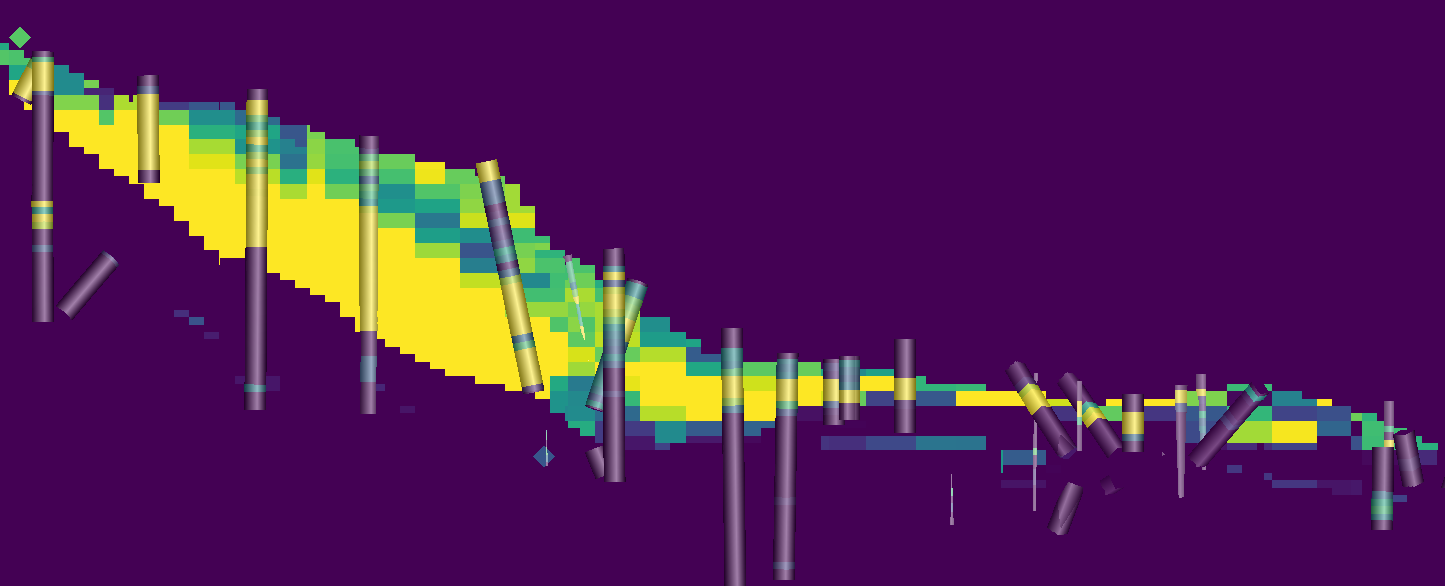
Case Study - Copper Creek
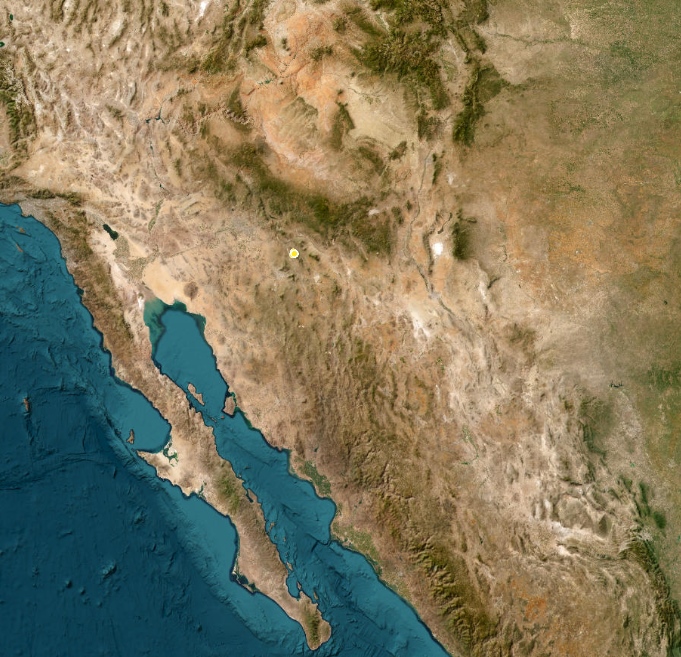
The Copper Creek deposit is located in Arizona, USA. The Project hosts a porphyry copper deposit in addition to high-grade, near-surface, breccia mineralisation.
The drilling database contains over 500 holes and 60000 assays, acquired by several companies over many years.
The complexity of the mineralization is such that averaging based on distance, rather than kriging, is preferred in traditional modelling. A Cyency DeepModel was constructed directly from the drilling data. Where the information density is low, the many veins in the deposit are naturally aggregated over a local volume. When there is more information, more structure can be preserved.
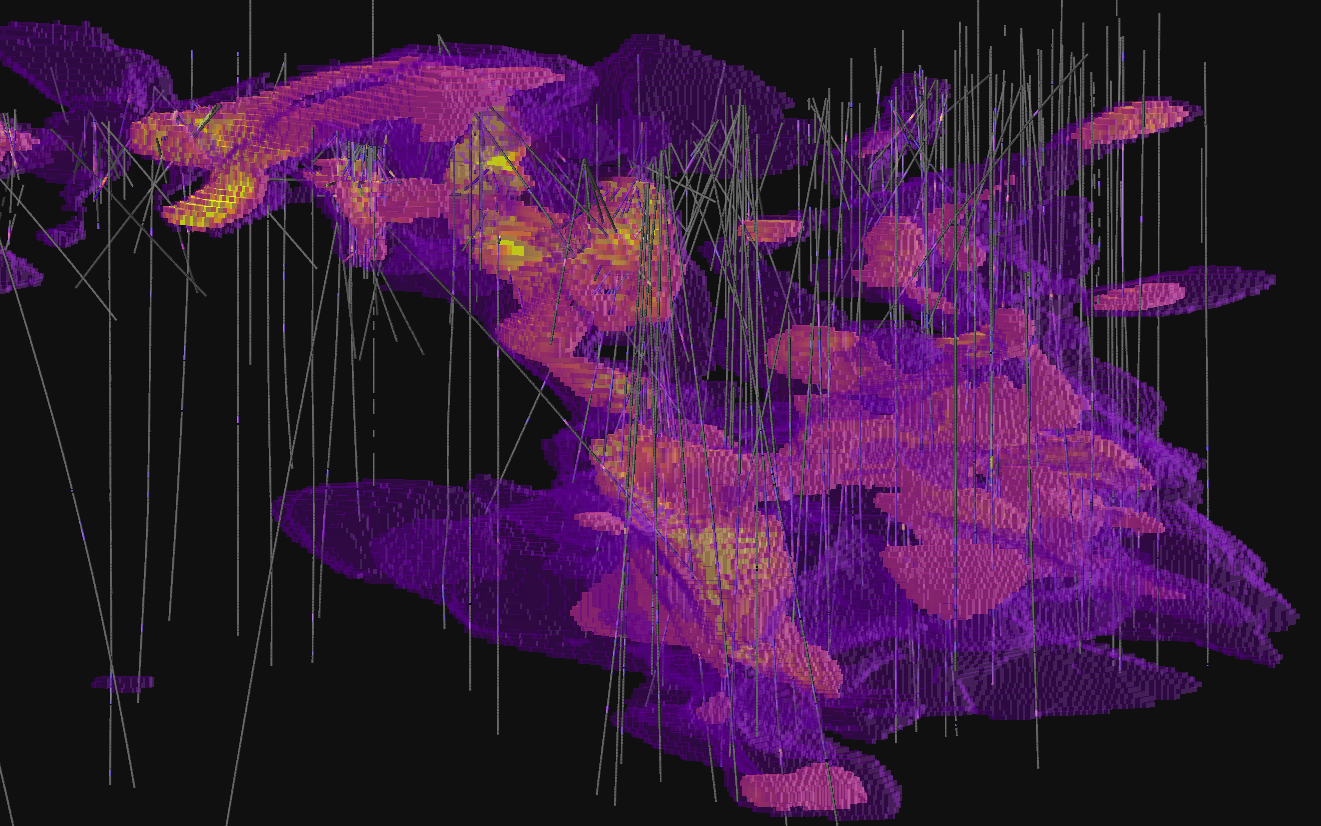
The predicted copper grades align well with the drilling data. The grade shells are smoother where the drilling density is lower.
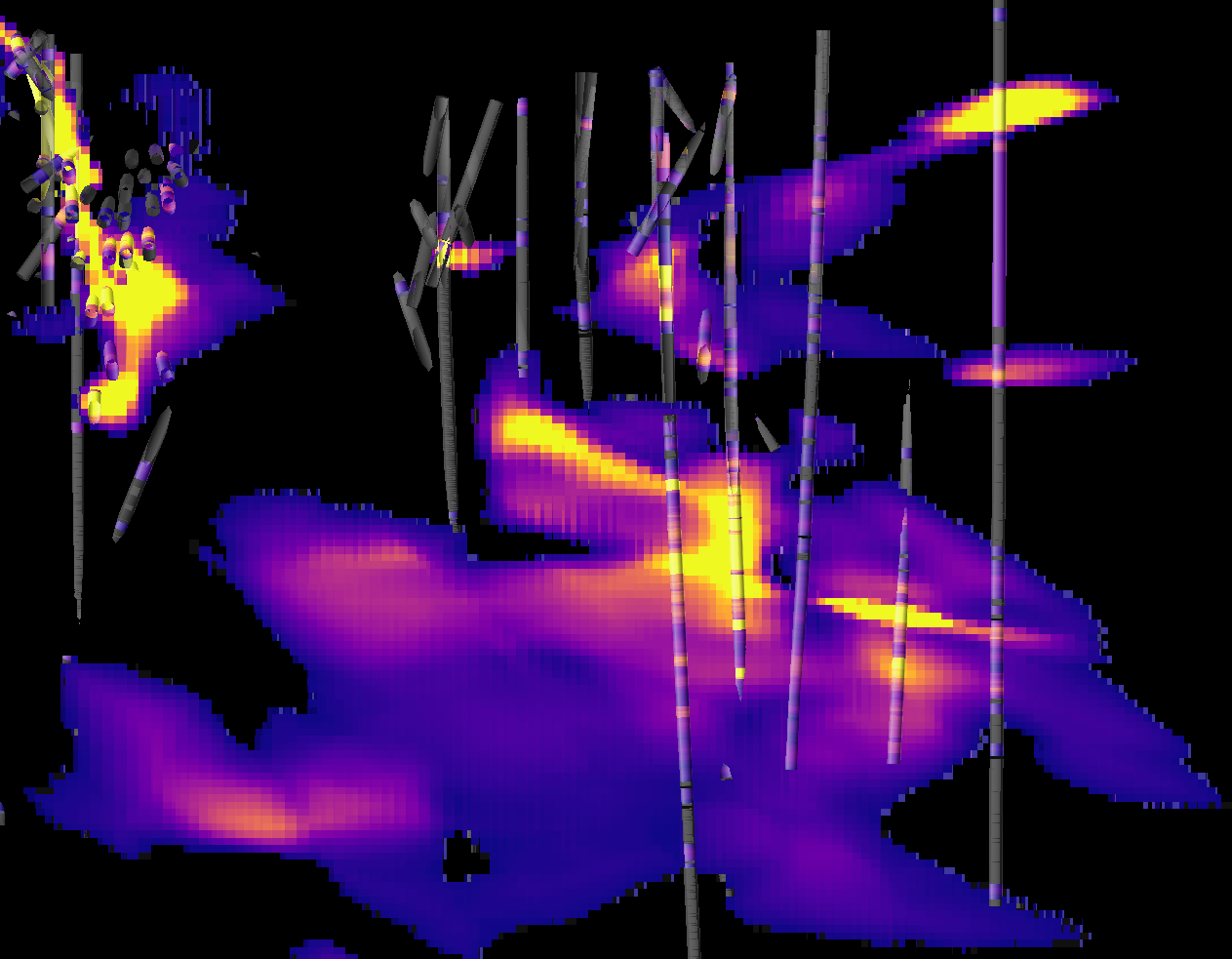
Case Study - Rocklea Channel Iron Deposit
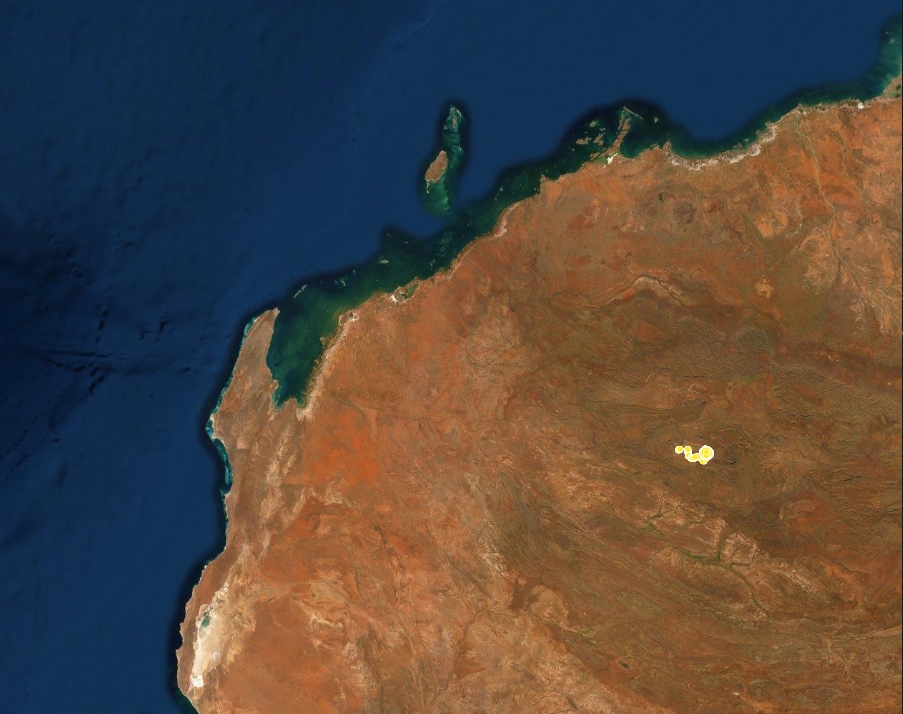
The Rocklea channel iron deposit is located in the Pilbara region of Western Australia.
The drilling database contains about 500 holes and 19000 assays spread over a large area.
The geometry of the ore follows a meandering tertiary palaeochannel, which the Cyency DeepModel is capable of tracing.

A Section viewed across the channel shows high grade values and the corresponding drilling.

Contact Us!
We would love to hear about your data and discuss how Cyency DeepModels could help you.
